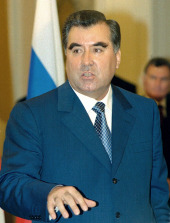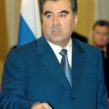
CACO-EEC MERGE TO ELIMINATE OVERLAPPING GOALS
Publication: Eurasia Daily Monitor Volume: 2 Issue: 188
By:

As leaders of Russia, Uzbekistan, Kyrgyzstan, and Tajikistan gathered for the October 6 Central Asian Cooperation Organization (CACO) summit in St. Petersburg, they decided to merge their grouping with yet another post-Soviet institution. The move appears to indicate that Moscow’s policies in Central Eurasia still prioritize Russia-dominated post-Soviet groupings.
The CACO and the Eurasian Economic Community (EEC) are to combine forces into a unified grouping, according to the CACO Council. The decision was announced by Tajik President Imomali Rakhmonov, who holds the CACO rotating presidency.
Belarus President Alexander Lukashenka, who holds the EEC rotating presidency, had no objections to the merger, Russian President Vladimir Putin told reporters. “I view today’s decision as the best birthday present from my colleagues,” said Putin, who turned 53 on October 7. Belarus is the only EEC member that is not simultaneously a member of the CACO (RIA-Novosti, Interfax, October 6-7).
Rakhmonov, who chaired the summit, said CACO leaders had discussed a program to build a common Central Asian market. However, the CACO leaders realized that both organizations, the CACO and the EEC, had increasingly overlapping goals.
Kazakh President Nursultan Nazarbayev said the merger would eliminate such duplication. “It allows us to cut our financial and time costs, hence the merger meets the interests of both the EEC and the CACO,” he said. Nazarbayev suggested that yet another grouping, the Single Economic Space (SES), could join the integration process eventually because, “The SES has the same purposes” (RIA-Novosti, Interfax, October 6-7). SES members include Russia, Ukraine, Belarus, and Kazakhstan
The CACO-EEC merger should boost economic ties between former Soviet republics and eventually unite them into a free-trade zone. It remains to be seen how the CACO-EEC grouping would be renamed in the wake of the merger.
The CACO was originally formed back in 1994 as the “Central Asian Economic Community,” and it was rechristened as the CACO in 2002. The CACO has pledged to create a regional common market and free-trade zone within 15 years. At the CACO summit Kazakhstan’s capital, Astana, in May 2004, Central Asian heads of state decided to accept Russia into their regional organization.
Russian officials hailed the merger. The CACO-EEC unification comes as a “logical move,” aimed at boosting multilateral integration, said Andrei Kokoshin, head of the CIS committee of the State Duma, the lower house of the Russian parliament. Uzbekistan’s inclusion into the CACO-EEC is “extremely important,” he declared. Regarding Uzbekistan, “The West has taken a position based on a misunderstanding of Central Asian realities, while Russian policy is strategically correct,” Kokoshin added (RIA-Novosti, October 7).
The Russian media was less optimistic about the combined CACO-EEC grouping. For his birthday, “Putin received an organization as a present,” Kommersant commented. The CACO leaders just repeat the same pronouncements of economic integration at all their summits without bothering to invent something new, according to the daily (Kommersant, October 7).
Russia has long declared that its ties with its former Soviet brethren are a top priority. Intensified relations with the Commonwealth of Independent States (CIS) states came as “the most significant result of 2004,” the Russian Foreign Ministry reported. Russia’s foreign policy in 2005 prioritizes ties with the CIS states, as well as other groupings such as the Shanghai Cooperation Organization, the Collective Security Treaty Organization, the Eurasian Economic Community, and the Central Asian Cooperation Organization, according to the Foreign Ministry.
In its Central Asian policy, Moscow seems to rely on long-ruling autocrats, largely ignoring domestic opposition there. Russia’s current over-reliance on relations with old elites has sparked speculations and conspiracy-style theories.
Earlier this month, Finance magazine alleged that Kremlin officials were mulling a possible union state of Russia and Kazakhstan, which would leave Moscow in control of 88% of the former Soviet Union. Putin could head the union state, while Nazarbayev could become vice president of the merged state. This scenario might allow Putin to stay in power after 2008 while Nazarbayev could be interested in the union with Russia to avoid the fate of his deposed Kyrgyz counterpart Askar Akayev, Finance speculated.
Moscow lost little time in dismissing speculation about a union state of Russia and Kazakhstan. “The issue of creating such a union state was not and is not discussed,” according to a press release from Russia’s Foreign Ministry (Interfax, October 6).
Vyacheslav Nikonov, head of the Politika Foundation, a Moscow-based think tank, described the reports of a possible merger of Russia and Kazakhstan as a “provocation.” Nikonov claimed that the Kazakh nationalist opposition had planted these rumors as a pre-election plot against Nazarbayev (Ekho Moskvy, Regnum, October 5).
In its post-Soviet CIS policies, Russia still relies on post-Soviet groupings, united under Moscow’s aegis. It remains to be seen whether the new CACO-EEC grouping will help or hinder its ability to deal with new challenges.




